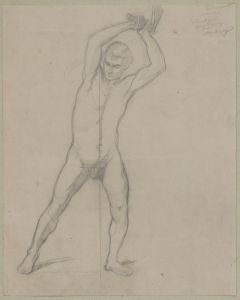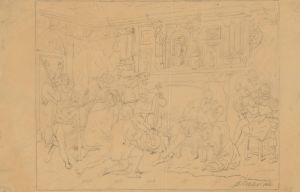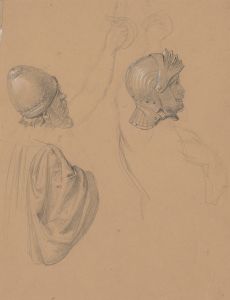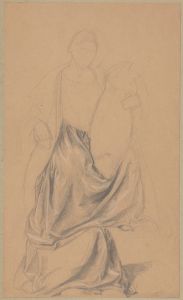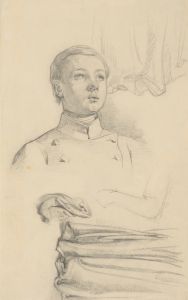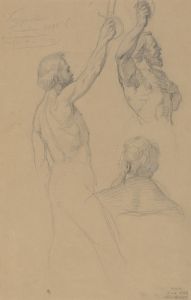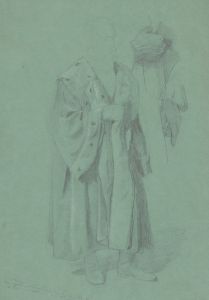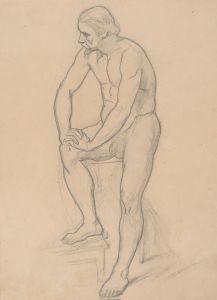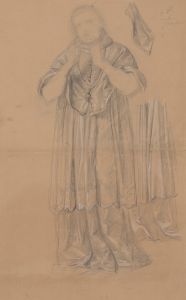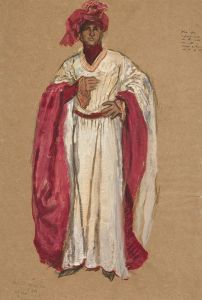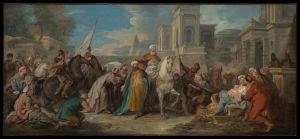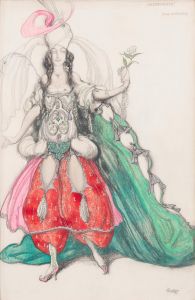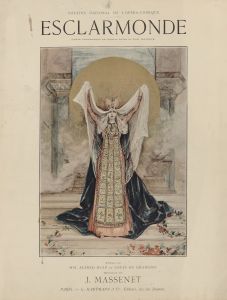
Study of clothing of the executioner to the painting ‘Martyrdom of St. Matthias’
A hand-painted replica of Józef Simmler’s masterpiece Study of clothing of the executioner to the painting ‘Martyrdom of St. Matthias’, meticulously crafted by professional artists to capture the true essence of the original. Each piece is created with museum-quality canvas and rare mineral pigments, carefully painted by experienced artists with delicate brushstrokes and rich, layered colors to perfectly recreate the texture of the original artwork. Unlike machine-printed reproductions, this hand-painted version brings the painting to life, infused with the artist’s emotions and skill in every stroke. Whether for personal collection or home decoration, it instantly elevates the artistic atmosphere of any space.
Józef Simmler, a notable Polish painter of the 19th century, is renowned for his historical and religious paintings. One of his significant works is "Martyrdom of St. Matthias," created in 1869. This painting depicts the martyrdom of St. Matthias, who, according to Christian tradition, was chosen to replace Judas Iscariot as one of the twelve apostles.
The painting captures the dramatic moment of St. Matthias's execution, showcasing Simmler's skill in portraying intense emotions and intricate details. The composition is carefully structured to draw the viewer's attention to the central figure of St. Matthias, who is depicted with a serene and resigned expression, emphasizing his martyrdom and faith.
One of the notable aspects of this painting is the detailed study of the clothing of the executioner. Simmler meticulously rendered the executioner's attire, which reflects the historical and cultural context of the period he aimed to represent. The executioner is dressed in garments that suggest a blend of historical authenticity and artistic interpretation, typical of Simmler's approach to historical subjects.
The executioner's clothing consists of a tunic and a cloak, which are rendered with careful attention to texture and folds. The tunic is simple yet functional, appropriate for the executioner's role, while the cloak adds a dramatic flair to the figure. The colors used in the clothing are muted, aligning with the somber tone of the scene. The executioner's attire contrasts with the more elaborate and brightly colored garments of the other figures in the painting, highlighting his role and adding to the overall composition's balance.
Simmler's attention to detail extends beyond the clothing to the executioner's physical appearance and posture. The executioner is depicted with a muscular build, emphasizing his strength and the physical nature of his task. His posture is firm and resolute, reflecting his role in the grim proceedings. The executioner's face is partially obscured, adding an element of anonymity and focusing the viewer's attention on the act of martyrdom rather than the individual performing it.
The painting "Martyrdom of St. Matthias" is a testament to Józef Simmler's ability to combine historical accuracy with artistic expression. His study of the executioner's clothing is a key element that contributes to the painting's overall impact, providing insight into the historical context and enhancing the emotional depth of the scene. Through his meticulous attention to detail and skillful composition, Simmler created a powerful and evocative portrayal of a significant moment in Christian history.





